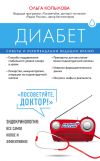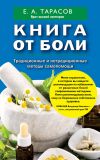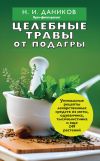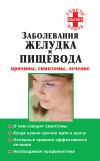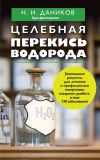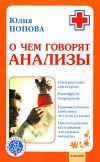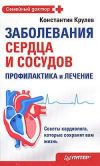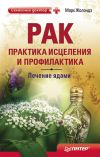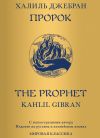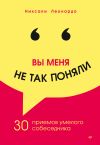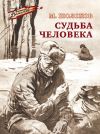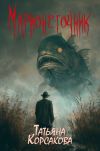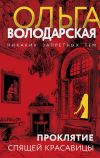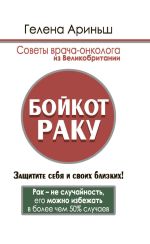
Автор книги: Гелена Ариньш
Жанр: Медицина, Наука и Образование
Возрастные ограничения: +12
сообщить о неприемлемом содержимом
Текущая страница: 6 (всего у книги 20 страниц) [доступный отрывок для чтения: 6 страниц]
Во время приготовления пищи с использованием высоких температур образуются канцерогены – вещества, стимулирующие образование ракового процесса. Как правило, их образование происходит при приготовлении мяса и рыбы в процессе жарки на сковороде или гриле (162), так как именно в этих случаях температура нагревания может достигать высоких показателей. На сегодняшний день известны два основных канцерогена, образующихся в этих условиях.
1. Гетероциклические амины (ГА).
2. Полициклические ароматические углеводороды (ПАУ).
ГА образуются во время взаимодействия аминовых кислот (белковая часть мяса), сахара и креатина с высокой температурой. ПАУ образуются, когда жир или сок мяса во время гриля на открытом огне падают в пламя, вызывая образование дыма. Этот дым содержит высокое количество ПАУ, которые «прилипают» к поверхности обжариваемого продукта.
ПАУ могут также образовываться во время других процессов приготовления пищи, таких как копчение (162).
Еще ПАУ могут быть обнаружены в сигаретном дыме и выхлопных газах.
Количество образовавшихся ГА и ПАУ зависит:
• от типа мяса (менее жирное мясо образует меньшее количество канцерогенов);
• времени приготовления (чем дольше, тем хуже);
• конкретной температуры (более 300 ºF или 150 ºС); например, при увеличении температуры с 200 ºС до 250 ºС количество канцерогенных веществ увеличивается в 3 раза!
• метода приготовления (мясо на открытом огне или углях вызывает самое высокое образование ПАУ)(163).
Образовавшиеся ГА и ПАУ проявляют свой канцерогенный эффект после «обработки» в организме специфическими ферментами. Активность этих ферментов может широко варьировать у разных людей, приводя к разной степени риска возникновения рака (164–166).
Дальнейшие исследования на эту тему проводятся в большом количестве.
Полезные советы любителям барбекю для снижения образования канцерогенов (167)
1. Используйте маленькие кусочки: они готовятся быстрее и при меньшей температуре.
2. Выбирайте нежирное мясо: меньшее количество жира снизит образование пламени и, соответственно, дыма.
3. Попробуйте сделать заготовку в микроволновой печи: даже 2-минутная экспозиция может снизить образование канцерогенных гетероциклических аминов на 90 % в последующем приготовлении мяса на гриле.
4. Часто переворачивайте кусочки: таким образом ни одна сторона не имеет хорошего шанса «впитать» слишком много тепла, это тоже снизит количество образующихся канцерогенов.
5. Mожно значительно снизить образование ГА и ПАУ, избегая жарить мясо над открытым огнем и класть его на горячую поверхность металла.
6. Срезайте обгоревшие части продукта, это тоже поможет снизить количество «съеденных» канцерогенов.
Главные выводы второй главы
1. Основой объем пищи должен состоять из семян, ягод, зеленых листьев, фруктов, овощей, жирных сортов рыбы и грибов, что будет тормозить образование раковых клеток.
2. Употребление большого количества волокнистой пищи и неферментированных соевых продуктов тормозит процесс ракообразования. Мед, имбирь и куркумин показали выраженную противораковую активность в лабораторных условиях.
3. Обработанное мясо (бекон, сосиски, колбасы, копчености) является сильным стимулятором образования злокачественного роста. Неумеренное употребление красного мяса (баранина, говядина, свинина) вызывает такой же эффект.
4. Употребление соли и сахара должно быть сведено к минимуму, так как оба продукта напрямую и косвенно способствуют развитию рака.
5. Употребление отдельных витаминов или их комплекса не тормозят развитие рака, а в некоторых случаях, наоборот, увеличивают риск его образования. Другие синтетические добавки и активные субстанции также не доказали своей пользы и могут быть вредными при определенных условиях или концентрациях. Баланс витаминов и микроэлементов должен обеспечиваться правильным приемом пищи и является залогом здорового функционирования организма.
6. Приготовление пищи при высоких температурах (обжаривание на сковороде и грилирование) приводит к образованию канцерогенов (ГА). Барбекю с использованием пламени или углей тоже приводит к образованию канцерогенных субстанций (ГА и ПАУ).
7. Прием очень горячей еды или напитков увеличивает риск образования рака верхних отделов пищеварительного тракта.
8. Избегайте употреблять пищу даже с легким налетом плесени, – микотоксины, содержащиеся в ней, являются канцерогенами.
Список литературы (глава 2)
1. Rohrmannet al. BMC Medicine: 2013, 11: 63
2. Mozaffarian D, Micha R, Wallace S. Effects on coronary heart disease of increasing polyunsaturated fat in place of saturated fat: a systematic review and meta-analysis of randomized controlled trials. PLoS Med 2010, 7: e1000252
3. Bingham SA, Hughes R, Cross AJ. Effect of white versus red meat on endogenous N-nitrosation in the human colon and further evidence of a dose response. J Nutr 2002, 132:3522S-3525S.
4. Joosen AMCP, Kuhnle GGC, Aspinall SM, Barrow TM, Lecommandeur E, Azqueta A, Collins AR, Bingham SA. Effect of processed and red meat on endogenous nitrosation and DNA damage.Carcinogenesis 2009, 30: 1402–1407.
5. Hebels DG, Sveje KM, de Kok MC, van Herwijnen MH, Kuhnle GG, Engels LG, Vleugels-Simon CB, Mares WG, Pierik M, Masclee AA, Kleinjans JC, deKok TM. N-nitroso compound exposure-associated transcriptomic profiles are indicative of an increased risk for colorectal cancer. Cancer Lett 2011, 309: 1–10.
6. Key TJ, Appleby PN, Spencer EA, Travis RC, Roddam AW, Allen NE. Mortality in British vegetarians: results from the European Prospective Investigation into Cancer and Nutrition (EPIC-Oxford). Am J Clin Nutr 2009, 89: 1613S-1619S.
7. Chang-Claude J, Hermann S, Eilber U, Steindorf K. Lifestyle determinants and mortality in German vegetarians and health-conscious persons: results of a 21-year follow-up. Cancer Epidemiol Biomarkers Prev 2005, 14: 963–968.
8. Pan A, Sun Q, Bernstein AM, Schulze MB, Manson JE, Stampfer MJ, Willett WC, Hu FB. Red meat consumption and mortality: results from 2 prospective cohort studies. Arch Intern Med 2012, 172: 555–563.
9. Sinha R, Cross AJ, Graubard BI, Leitzmann MF, Schatzkin A. Meat intake and mortality: a prospective study of over half a million people. Arch Intern Med 2009, 169: 562–571.
10. Bamia C1, Lagiou P, Buckland G, Grioni S, Agnoli C, Taylor AJ, Dahm CC, Overvad K, Olsen A, Tjønneland A, Cottet V, Boutron-Ruault MC, Morois S, Grote V, Teucher B, Boeing H, Buijsse B, Trichopoulos D, Adarakis G, Tumino R, Naccarati A, Panico S, Palli D, Bueno-de-Mesquita HB, van Duijnhoven FJ, Peeters PH, Engeset D, Skeie G, Lund E, Sánchez MJ, Barricarte A, Huerta JM, Quirós JR, Dorronsoro M, Ljuslinder I, Palmqvist R, Drake I, Key TJ, Khaw KT, Wareham N, Romieu I, Fedirko V, Jenab M, Romaguera D, Norat T, Trichopoulou A. Mediterranean diet and colorectal cancer risk: results from a European cohort. Eur J Epidemiol 2013 Apr; 28(4): 317–28. doi: 10.1007/s10654-013-9795-x. Epub 2013 Apr 12.
11. Agnoli C, Grioni S, Sieri S, Palli D, Masala G, Sacerdote C, Vineis P, Tumino R, Giurdanella MC, Pala V, Berrino F, Mattiello A, Panico S, Krogh V. Italian Mediterranean Index and risk of colorectal cancer in the Italian section of the EPIC cohort. Int J Cancer 2013 Mar 15; 132(6): 1404–11. doi: 10.1002/ijc.27740. Epub 2012 Aug 7.
12. Ros MM, Bueno-de-Mesquita HB, Kampman E, Büchner FL, Aben KK, Egevad L, Overvad K, Tjønneland A, Roswall N, Clavel-Chapelon F, Boutron-Ruault MC, Morois S, Kaaks R, Teucher B, Weikert S, von Ruesten A, Trichopoulou A, Naska A, Benetou V, Saieva C, Pala V, Ricceri F, Tumino R, Mattiello A, Peeters PH, van Gils CH, Gram IT, Engeset D, Chirlaque MD, Ardanazx E, Rodríguez L, Amanio P, Gonzalez CA, Sánchez MJ, Ulmert D, Ernström R, Ljungberg B, Allen NE, Key TJ, Khaw KT, Wareham N, Slimani N, Romieu I, Kiemeney LA, Riboli E. Fruit and vegetable consumption and risk of aggressive and non-aggressive urothelial cell carcinomas in the European Prospective Investigation into Cancer and Nutrition. Eur J Cancer. 2012 Nov; 48(17): 3267–77. doi: 10.1016/j.ejca.2012.05.026. Epub 2012 Aug 3.
13. Babio N, Balanza R, Basulto J et al. Dietary fibre: influence on body weight, glycemic control and plasma cholesterol profile.Nutr Hosp 2010; 25: 327–340.
14. Wanders AJ, van den Borne JJ, de Graaf C et al. Effects of dietary fibre on subjective appetite, energy intake and body weight: a systematic review of randomized controlled trials. Obesity Rev 2011; 12: 724–739.
15. V. Fedirko, A. Lukanova, C. Bamia, A. Trichopolou, E. Trepo, U. Nöthlings, S. Schlesinger, K. Aleksandrova, P. Boffetta, A. Tjønneland, N. F. Johnsen, K. Overvad, G. Fagherazzi, A. Racine, M. C. Boutron-Ruault, V. Grote, R. Kaaks, H. Boeing, A. Naska, G. Adarakis, E. Valanou, D. Palli, S. Sieri, R. Tumino, P. Vineis, S. Panico, H. B(as). Bueno-de-Mesquita, P. D. Siersema, P. H. Peeters, E. Weiderpass, G. Skeie, D. Engeset, J. R. Quirós, R. Zamora-Ros, M. J. Sánchez, P. Amiano, J. M. Huerta, A. Barricarte, D. Johansen, B. Lindkvist, M. Sund, M. Werner, F. Crowe, K. T. Khaw, P. Ferrari, I. Romieu, S. C. Chuang, E. Riboli, M. Jenab Glycemic index, glycemic load, dietary carbohydrate, and dietary fiber intake and risk of liver and biliary tract cancers in Western Europeans. Annals of Oncology 24: 543–553, 2013.
16. Choi Y, Song S, Song Y, Lee JE. Consumption of red and processed meat and esophageal cancer risk: meta-analysis. World J Gastroenterol. 2013 Feb 21; 19(7): 1020–9. doi: 10.3748/wjg.v19.i7.1020.
17. Nöthlings U, Wilkens LR, Murphy SP, Hankin JH, Henderson BE, Kolonel LN. Meat and fat intake as risk factors for pancreatic cancer: the multiethnic cohort study. J Natl Cancer Inst. 2005 Oct 5; 97(19): 1458–65.
18. Risch HA. Etiology of pancreatic cancer, with a hypothesis concerning the role of N-nitroso compounds and excess gastric acidity. J Natl Cancer Inst 2003; 95: 948–60.
19. Ghadirian P, Lynch HT, Krewski D. Epidemiology of pancreatic cancer: an overview. Cancer Detect Prev 2003; 27: 87–93.
20. Allen NE, Key TJ, Appleby PN, Travis RC, Roddam AW, Tjønneland A, Johnsen NF, Overvad K, Linseisen J, Rohrmann S, Boeing H, Pischon T, Bueno-de-Mesquita HB, Kiemeney L, Tagliabue G, Palli D, Vineis P, Tumino R, Trichopoulou A, Kassapa C, Trichopoulos D, Ardanaz E, Larrañaga N, Tormo MJ, González CA, Quirós JR, Sánchez MJ, Bingham S, Khaw KT, Manjer J, Berglund G, Stattin P, Hallmans G, Slimani N, Ferrari P, Rinaldi S, Riboli E. Animal foods, protein, calcium and prostate cancer risk: the European Prospective Investigation into Cancer and Nutrition. Br J Cancer. 2008 May 6; 98(9): 1574–81. doi:10.1038/sj.bjc.6604331. Epub 2008 Apr 1.
21. WCRF/AICR. World Cancer Research Fund/American Institute for Cancer Research. Food, Nutrition, Physical Activity, and the Prevention of Cancer: a Global Perspective. Washington, DC: AICR, 2007.
22. Larsson SC, Kumlin M, Ingelman-Sundberg M et al. Dietary long-chain n-3 fatty acids for the prevention of cancer: a review of potential mechanisms. Am J Clin Nutr 2004; 79(6): 935–945.
23. Fedirko V, Trichopolou A, Bamia C, Duarte-Salles T, Trepo E, Aleksandrova K, Nöthlings U, Lukanova A, Lagiou P, Boffetta P, Trichopoulos D, Katzke VA, Overvad K, Tjønneland A, Hansen L, Boutron-Ruault MC, Fagherazzi G, Bastide N, Panico S, Grioni S, Vineis P, Palli D, Tumino R, Bueno-de-Mesquita HB, Peeters PH, Skeie G, Engeset D, Parr CL, Jakszyn P, Sánchez MJ, Barricarte A, Amiano P, Chirlaque M, Quirós JR, Sund M, Werner M, Sonestedt E, Ericson U, Key TJ, Khaw KT, Ferrari P, Romieu I, Riboli E, Jenab M. Consumption of fish and meats and risk of hepatocellular carcinoma: the European Prospective Investigation into Cancer and Nutrition (EPIC). Ann Oncol. 2013 Aug; 24(8): 2166–73. doi: 10.1093/annonc/mdt168. Epub 2013 May 12.
24. González CA, Jakszyn P, Pera G, Agudo A, Bingham S, Palli D, Ferrari P, Boeing H, del Giudice G, Plebani M, Carneiro F, Nesi G, Berrino F, Sacerdote C, Tumino R, Panico S, Berglund G, Simán H, Nyrén O, Hallmans G, Martinez C, Dorronsoro M, Barricarte A, Navarro C, Quirós JR, Allen N, Key TJ, Day NE, Linseisen J, Nagel G, Bergmann MM, Overvad K, Jensen MK, Tjonneland A, Olsen A, Bueno-de-Mesquita HB, Ocke M, Peeters PH, Numans ME, Clavel-Chapelon F, Boutron-Ruault MC, Trichopoulou A, Psaltopoulou T, Roukos D, Lund E, Hemon B, Kaaks R, Norat T, Riboli E. Meat intake and risk of stomach and esophageal adenocarcinoma within the European Prospective Investigation Into Cancer and Nutrition (EPIC). J Natl Cancer Inst. 2006 Mar 1; 98(5): 345–54.
25. Doll R, Peto R. The causes of cancer: quantitative estimates of avoidable risks of cancer in the United States today. Journal of the National Cancer Institute 1981; 66: 1191–308.
26. Miller AB. Diet in cancer prevention. Htpp:./www.who.int/ncd/cancer/publications/abstracts/abs9810_05 (2001).
27. World Cancer Research Fund. Food, Nutrition and the Prevention of Cancer: a Global Perspective.Washington DC: American Institute for Cancer Research, 1997.
28. World Health Organisation: International Agency for Research on Cancer. Cancer: Causes, Occurrence and Control. Lyon: IARC, 1990.
29. Sharp L, Chilvers CE, Cheng KK, et al. Risk factors for squamous cell carcinoma of the oesophagus in women: a case control study. British Journal of Cancer 2001; 85: 1667–70.
30. Helicobacter and Cancer Collaborative Group. Gastric cancer and Helicobacter pylori: a combined analisys pf 12 case control studies nested within prospective cohorts. Gut 2001; 49: 347–53.
31. Blot WJ, Li JY, Taylor PR, et al. Nutrition intervention trilas in Linxian, China: supplementation with specific vitamins/mineral combinations, cancer incidence, and disease specific motrality in the general population. Journal of the National Cancer Institute 1993; 85: 1483–92.
32. Gooderham NJ, Murray S, Lynch AM, et al. Assessing human risk to heterocyclic amines. Mutation Research 1997; 376: 53–60.
33. Kazerouni N, Sinha R, HSU CH, Greenberg A, Rothman N. Analysis of 200 food items for benzo(a)pyrene and estimation of its intake in an epidemiologic study. Food Chemistry and Toxicology 2001; 39: 423–36.
34. Lung EK, Wharf SG, Fairweather-Tait SJ, Johnson IT. Oral ferrous sulfate supplements increase the free radical-generating capacity of feces from healthy volunteers. American Journal of Clinical Nutrition 1999; 69: 250–5.
35. Burkitt DP. Related disease – related cause? Lancet 1969; 2: 1229–31.
36. La Vecchia C. Diet and human cancer: a review. European Journal of Cancer Prevention 2001; 10: 177–81.
37. Giovannucci E, Rimm EB, Ascherio A, Stampfer MJ, Colditz GA, Willett WC. Alcohol, low-methionine, low-folate diets, and risk of colon cancer in men. Journal of the National Cancer Institute 1995; 87: 265–73.
38. Choi SW, Mason JB. Folate and carcinogenesis: an integrated scheme. Journal of Nutrition 2000; 130:129-32.
39. Potter JD. Colorectel cancer: molecules and population. Journal of the National Cancer Institute 1999; 91: 916–32.
40. Clark LC, Dalkin B, Krongrad A, et al. Decreased incidence of prostate cancer with selenium supplementation: results of a double– blind cancer prevention trial. British Journal of Urology 1998; 81: 730–4.
41. Goodstine SL, Zheng T, Holford TR, Ward BA, Carter D, Owens PH, Mayne ST. Dietary N3/N6 fatty acid ratio: possible relationship to premenopausal but not postmenopausal breast cancer risk in US women. J Nutr 2003; 133: 1409–1414.
42. Simonsen N, van`t Veer P, Strain JJ, Martin-Moreno JM, Huttunen JK, Navajas JF, Martin BC, Thamm M, Kardinaal AF, Kok FJ, Kohlmeier L. Adipose tissue omega-3 and omega-6 fatty acid content and breast cancer in the EURAMIC study. European Community Multicenter Study on Antioxidants, Myocardial Infarction, and Breast Cancer. Am J Epidemiol 1998; 147: 342–352.
43. Maillard V, Bougnoux P, Ferrari P, Jourdan ML, Pinault M, Lavillonniere F, Body G, Le Floch O, Chajes V. N3 and N6 fatty acids in breast adipose tissue and relative risk of breast cancer in a case-control study in Tours, France. Int J Cancer 2002; 98: 78–83.
44. Bagga D, Anders KH, Wang HJ, Glaspy JA. Long-chain n-3-to-n-6 polyunsaturated fatty acid ratios in breast adipose tissue from women with and without breast cancer. Nutr Cancer 2002; 42: 180–185.
45. Gago-Dominguez M, Yuan JM, Sun CL, Lee HP, Yu MC. Opposing effects of dieatary n-3 and n-6 fatty acids on mammary carcinogenesis: The Sngapore Chinese Health Study. Br J Cancer 2003; 89: 1686–1692.
46. Brooks JD, Ward WE, Lewis JE, Hilditch J, Nickell L, Wong E, Thompson LU. Supplementation with flaxseed alters estrogen metabolism in postmenopausal women to a greater extent than does supplementation with the equal amount of soy. Am J Clin Nutr 2004; 79: 318–325.
47. Fabien S. Dalais, Andreanyta Meliala, Naiyana Wattanapenpaiboon, Mark Frydenberg, David A.I. Suter, William K. Thomson. Effects of a diet rich in phytoestrogens on prostate-specific antigen and sex hormones in men diagnosed with prostate cancer. Urology Volume 64, Issue 3, Pages 510–515, September 2004.
48. Thompson LU, Rickard SE, Orcheson LJ, Seidl MM. Flaxseed and its lignin and oil components reduce mammary tumor growth at a late stage of carcinogenesis. Carcinogenesis 1996; 17: 1373–1376.
49. Thompson LU, Seidl MM, Rickard SE, Orcheson LJ, Fong HH. Antitumorigenic effect of a mammalian lignin precursor from flaxseed. Nutr Cancer 1996; 26: 159–165.
50. Yan L, Yee JA, Li D, McGuire MH, Thompson LU. Dietary flaxseed supplementation and experimental metastasis of melanoma cells in mice. Cancer Lett 1998, 124: 181–186.
51. Chen J, Stavro PM, Thompson LU. Dietary flaxseed inhibits human breast cancer growth and metastasis and downregulates expression of insulin-like growth factor and epidermal growth factor receptor. Nutr Cancer 2002; 43: 187–192.
52. Chen J, Tan KP, Ward WE, Thompson LU. Exposure to flaxseed or its purified lignin during suckling inhibits chemically induced rat mammary tumotigenensis. Exp Biol Med 2003; 228: 951–958.
53. Demark – Wahnefried W, Price DT, Polascik TJ, Robertson CN, Anderson EE, Paulson DF, Walther PJ, Gannon M, Vollmer RT. Pilot study of dietary fat restriction and flaxseed supplementation in men with prostate cancer before surgery: exploring the effects of hormonal levels, prostate-specific antigen, and histopathologic features. Urology 2001; 58: 47–52.
54. Brouwer IA, Katan MB, Zock PL. Dietary alfa-linolenic acid is associated with reduced risk of fatal coronary heart disease, but increased prostate cancer risk: a meta-analysis. J Nutr 2004; 134: 919–922.
55. Block G, Patterson B, Subar A. Fruit, vegetables, and cancer prevention: a review of the epidemiological evidence. Nutr Cancer 1992, 18: 1–29.
56. WCRF/AICR. Food, nutrition and the prevention of cancer: a global perspective: World Cancer Research Fund/American Institute for Cancer Research 1997.
57. Steinmetz KA, Potter JD. Vegetables, fruit, and cancer prevention: a review. Am J Diet Assoc 1996; 96: 1027–1039.
58. Fleuschauer AT, Poole C, Arab L. Garlic consumption and cancer prevention: meta-analysis of colorectal and stomach cancer. Am J Clin Nutr 2000; 72: 1047–1052.
59. Fleischauer AT, Arab L. Garlic and cancer: a critical review of the epidemiologic literature. J Nutr 2001; 131: 1032S–1040S.
60. Hsing AW, Chokkalingham AP, Gao YT, Madigan MP, Deng J, Gridley G, Fraumeni JF. Allium vegetables and risk of prostate cancer: a population-based study. J Natl Cancer Inst 2002; 94: 1648–1651.
61. Kim DH, Smith-Warner SA, Spiegelman D et al. Pooled analysis of 13 prospective cohort studies on folate intake and colon cancer. Cancer Causes Control 2010; 21:1919–1930.
62. Strickland KC, Krupenko NI, Krupenko SA. Molecular mechanisms underlying the potentially adverse effects of folate. Clin Chem Lab Med. 2012 Dec; 12: 1–10.
63. Shaidah Deghan Manshadi, Lisa Ishiguro, Kyoung-Jin Sohn, Alan Medline, Richard Renlund, Ruth Croxford, Young-In Kim. Folic Acid Supplementation Promotes Mammary Tumor Progression in a Rat Model. Published: January 21, 2014 DOI: 10.1371/journal.pone.0084635
64. Cravo ML, Mason JB, Dayal Y, Hutchinson M, Smith D, et al. Folate deficiency enhances the development of colonic neoplasia in dimethylhydrazine-treated rats. Cancer Res 1992, 52: 5002–5006.
65. Kim YI, Salomon RN, Graeme-Cook F, Choi SW, Smith DE, et al. Dietary folate protects against the development of macroscopic colonic neoplasia in a dose responsive manner in rats. Gut 1996, 39: 732–740.
66. Lindzon GM, Medline A, Sohn KJ, Depeint F, Croxford R, et al. Effect of folic acid supplementation on the progression of colorectal aberrant crypt foci. Carcinogenesis 2009, 30: 1536–1543.
67. Song J, Medline A, Mason JB, Gallinger S, Kim YI. Effects of dietary folate on intestinal tumorigenesis in the apcMin mouse. Cancer Res 2000, 60: 5434–5440. doi: 10.1016/s0016-5085(00)83190-x.
68. Song J, Sohn KJ, Medline A, Ash C, Gallinger S, et al. Chemopreventive effects of dietary folate on intestinal polyps in Apc+/−Msh2−/− mice. Cancer Res 2000, 60: 3191–3199.
69. Fowke JH, Chung FL, Jin F, Qi D, Conaway C, Cheng JR, Shu XO, Gao YT, Zheng W. Urinary isothiocyanate levels, brassica, and human breast cancer. Cancer Res 2003; 63: 3980–3986.
70. Zhang SM, Hunter DJ, Rosner BA, Giovannucci EL, Colditz GA, Speizer FE, Willett WC. Intakes of fruits, vegetables, and related nutrients and risk of non-Hodgkin`s lypmphoma among women. Cancer Epidemiol Biomarkers Prev 2000; 9: 477–485.
71. Cohen JH, Kristal AR, Stanford JL. Fruit and vegetable intakes and prostate cancer risk. J Natl Cancer Inst 2000; 92: 61–68.
72. Colonel LN, Hankin JH, Whittermore AS, Wu AH, Gallagher RP, Wilkens LR, John EM, Howe GR, Dreon DM, West DM, Paffenbarger RS. Vegetables, fruits, legumes and prostate cancer: a multiethnic case-control study. Cancer Epidemiol Biomarkers Prev 2000; 9:795–804.
73. Duffield – Lillico AJ, Reid ME, Turnbull BW, Combs GF Jr, Slate EH, Fischbach LA, Marshall JA, Clark LC. Baseline characteristics and the effect of selenium supplementation on cancer incidence in a randomized clinical trial: a summary report of the Nutritional Prevention of Cancer Trial. Cancer Epidemiol Biomarkers Prev 2002; 11: 630–639.
74. Clark LC, Combs GF Jr, Turnbull BW, Slate EH, Chalker DK, Chow J, Davis LS, Glover RA, Graham GF, Gross EG, Krongrad A, Lesher JL Jr, Park HK, Sanders BB Jr, Smith CL, Taylor JR. Effects of selenium supplementation for cancer prevention in patients with carcinoma of the skin. A randomized controlled trial. Nutritional Prevention of Cancer Study Group. Jama 1996; 276: 1957–1963.
75. Ghadirian P, Maisonneuve P, Perret C, Kennedy G, Boyle P, Krewski D, Lacroix A. A case-control study of toenail selenium and cancer of the breast, colon, and prostate. Cancer Detect Prev 2000; 24: 305–313.
76. Reid ME, Duffield-Lillico AJ, Garland L, Turnbull BW, Clark LC, Marshall JR. Selenium supplementation and lung cancer incidence: an update of the nutritional prevention of cancer trial. Cancer Epidemiol Biomarkers Prev 2002; 11: 1285–1291.
77. van den Brandt PA, Goldbohm RA, van`t Veer P, Hermus RJ, Sturmans F. A prospective cohort study on selenium status and the risk of lung cancer. Cancer Res 1993; 53: 4860–4865.
78. van den Brandt PA, Goldbohm RA, van`t Veer P, Hermus RJ, Sturmans F. Toenail selenium levels and the risk of breast cancer. Am J Epidemiol 1994; 140: 20–26.
79. Hunter DJ, Morris JS, Stampfer MJ, Colditz GA, Speizer FE, Willett WC. A prospective study of selenium status and breast cancer risk. Jama 1990; 264: 1128–1131.
80. van`t Veer P, van der Wielen RP, Kok FJ, Hermus RJ, Sturmans F. Selenium in diet, blood, and toenails in relation to breast cancer: a case-control study. Am J Epidemiol 1990; 131: 987–994.
81. van Noord PA, Collette HJ, Maas MJ, de Waard F. Selenium levels in nails of premenopausal breast cancer patients assessed prediagnostically in a cohort-nested case-referent study among women screened in the DOM project. Int J Epidemiol 1987; 16: 318–322.
82. Holt PR, Arber N, Halmos B, Forde K, Kissileff H, McGlynn KA, Moss SF, Kurihara N, Fan K, Yang K, Lipkin M. Colonic epithelial cell proliferation decreases with increasing levels of serum 25-hydroxyvitamin D. Cancer Epidemiol Biomarkers Prev 2002; 11: 113–119.
83. Barreto AM, Schwartz GG, Woodruff R, Cramer SD. 25-hydroxyvitamin D3, the prohormone of 1,25-dihydroxyvitamin D3, inhibits the proliferation of primary prostatic epithelial cells. Cancer Epidemiol Biomarkers Prev 2000; 9: 265–270.
84. Schwartz GG, Eads D, Rao A, Cramer SD, Willingham MC, Chen TC, Jamieson DP, Wang I, Burnstein KL, Holick MF, Koumenis C. Pancreatic cancer cells express 25-hidroxyvitamin D-1alpha-hydroxylase and their proliferation is inhibited by the prohormone 25-hydroxyvitamin D3. Carcinoginesis 2004; 25: 1015–1026.
85. Hanchette CL, Schwartz GG. Geographic patterns of prostate cancer mortality. Evidence for a protective effect of ultraviolet radiation. Cancer 1992; 70: 2861–2869.
86. Lefkowitz ES, Garland CF. Sunlight, vitamin D, and ovarian cancer mortality rates in US women. Int J Epidemiol 1994; 23: 1133–1136.
87. Gorham ED, Garland FC, Garland CF. Sunlight and breast cancer incidence in the USSR. Int J Epidemiol 1990; 19: 820–824.
88. Grant WB. Ecologic studies of solar UV-B radiation and cancer mortality rates. Recent Results Cancer Res 2003;164: 371–377.
89. Grant WB. An estimate of premature cancer mortality in the U.S.due to inadequate doses of solar ultraviolet-B radiation. Cancer 2002; 94: 1867–1875.
90. Jenab M, Bueno-de-Mesquita HB, Ferrari P et al. Association between prediagnostic circulating vitamin D concentration and risk of colorectal cancer in European populations: a nested case-control study. BMJ 2010; 340: b5500.
91. Qiao YL, Dawsey SM, Kamangar F et al. Total and cancer mortality after supplementation with vitamins and minerals: follow-up of the Linxian General Population Nutrition Intervention Trial. J Natl Cancer Inst 2009; 101: 507–518.
92. Blot WJ, Li JY, taylor PR et al. Nutrition intervention trials in Linxian, China: supplementation with specific vitamin/ mineral combinations, cancer incidence, and disease-specific mortality in the general population. J Natl cancer Inst 1993; 85: 1483–1492.
93. Medhekar R. The first quantitative evidence providing the efficacy of supplemental enzymes. In Forsyth, MO: National Enzyme Company, Inc 2004.
94. Wald M, Olejar T, Pouckova P, Zadinova M. Proteases reduce metastatic dissemination and increase survival time in C57B16 mice with the Lewis lung carcinoma. Life Sci 1998; 63: L237–243.
95. Wald M, Zavadova E, Pouckova P, Zadinova M, Boubelik M. Polyenzyme preparation Wobe-Mugos inhibits growth of solid tumors and development of experimental metastases in mice. Life Sci 1998; 62: L43–48.
96. Dale PS, Tamhankar CP, George D, Daftary GV. Co-medication with hydrolytic enzymes in radiation therapy of uterine cervix: evidence of the reduction od acute side effects. Cancer Chemother Pharmacol 2001; 47: S29–34.
97. Gujral MS, Patnaik PM, Kaul R, Parikh HK, Conradt C, Tamhankar CP, Daftary GV. Efficacy of hydrolytic enzymes in preventing radiation therapy-induced side effects in patients with head and neck cancers. Cancer Chemother Pharmacol 2001; 47: S23–28.
98. Popiela T, Kulig J, Hanisch J, Bock PR. Influence of a complementary treatment with oral enzymes on patients with colorectal cancers – an epidemiological retrolective cohort study. Cancer Chemother Pharmacol 2001;47: S55–63.
99. Beuth J, Ost B, Pakdaman A, Rethfeldth E, Bock PR, Hanisch J, Schneider B. Impact of complementary oral enzyme application on the postoperative treatment results of breast cancer patients – resultsof an epidemiological multicentre retrolective cohort study. Cancer Chemother Pharmacol 2001; 47: S45–54.
100. Bidoli E, Franceschi S, Talamini R, Barra S, La Vecchia C. Food consumption and cancer of the colon and rectum in northeastern Italy. Int J Cancer 1992; 50: 223–9.
101. Norat T, Lukanova A, Ferrari P, Riboli E. Meat consumption and colorectal cancer risk: dose-response meta-analysis of epidemiological studies. Int J Cancer 2002; 98: 241–56.
102. Terry P, Giovanucci E, Michels KB, Bergkvist L, Hansen H, Holmberg L, et al. Fruit, vegetables, dietary fiber, and risk of colorectal cancer. J Natl Cancer Inst 2001; 93: 525–33.
103. Levi F, Pasche C, Lucchini F, La Vecchia C. Dietary fibre and the risk of colorectal cancer. Eur J Cancer 2001; 37: 2091–6.
104. Bingham SA, Day NE, Luben R, Ferrari P, Slimani N, Norat T, et al. Dietary fiber in food and protection against colorectal cancer in the European Prospective Investigation into Cancer and Nutrition (EPIC); an observational study. Lancet 2003; 361: 1496–501.
105. Aune D, Chan DS, Greenwood DC, et al. Dietary fiber and breast cancer risk: a systemic review and meta-analysis of prospective studies. Ann Oncol 2012; 23: 1394–1402.
106. Ferrari P, Rinaldi S, Jenab M, et al. Dietary fiber intake and risk of hormonal receptor-defined breast cancer in the European Prospective Investigation into Cancer and Nutrition Study. Am J Clin Nutr 2013; 97: 344–353.
107. Jelen P 2005. In: Shortt C, O`Brien J, editors. Handbook of functional dairy products. Boca Raton, Fla: CRC Press.
108. Miller GD, Jarvis JK, McBean LD, 2007. Handbook of dairy foods and nutrition. Boca Raton, Fla: CRC p1.
109. McCann SE, Ip C, Ip MM, McGuire MK, Muti P, Edge SB, Trevisan M, Freudenheim JL. Dietary intake of conjugated linoleic acid and risk of premenopausal and postmenopausal breast cancer, Western New York Exposures and Breast Cancer Study (WEB study). Cancer Epidemiol Biomarkers Prev 2004; 13: 1480–4.
110. Moorman PG, Terry PD. Consumption of dairy products and the risk of breast cancer: a review of the literature. Am J Clin Nutr 2004, 80:5–14.
111. Parodi PW. Dairy product consumption and the risk of breast cancer. J Am Coll Nutr 2005; 24: 556S–68S.
112. Bingham SA, Day N. Commentary: fat and breast cancer: time to re-evaluate both methods and results? Intl J Epidemiol 2006; 35: 1022–4.
113. Cui Y, Rohan TE. Vitamin D, calcium, and breast cancer risk: a review. Cancer Epidemiol Biomarkers Prev 2006; 15: 1427–37.
Внимание! Это не конец книги.
Если начало книги вам понравилось, то полную версию можно приобрести у нашего партнёра - распространителя легального контента. Поддержите автора!Правообладателям!
Данное произведение размещено по согласованию с ООО "ЛитРес" (20% исходного текста). Если размещение книги нарушает чьи-либо права, то сообщите об этом.Читателям!
Оплатили, но не знаете что делать дальше?